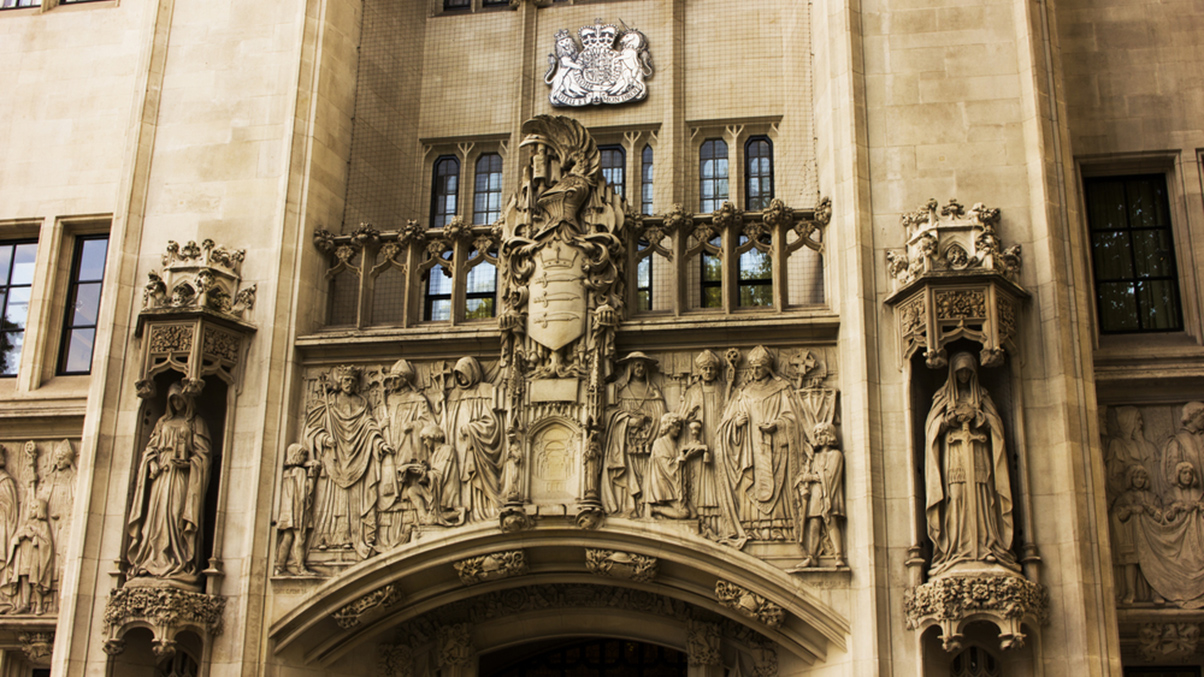Angela Milner reviews the effects of the PD for both witnesses and lawyers in this article.
Before April 2021, many in the judiciary felt that trial witness statements had become highly crafted pieces of work. The ‘true’ recollection of the witness was being distorted or lost, such was the desire among lawyers and witnesses to produce the ‘perfect’ witness statement.
It was not uncommon for lawyers to spend days (or sometimes weeks) preparing lengthy statements on behalf of their clients or for the court to be taken through a significant volume of documents in painstaking detail. Nor was it unusual for there to be a large number of drafts. Although there were rules (in the form of Civil Procedure Rule (CPR) 32 (Evidence)) that sought to minimise the risk of witness statements being over-lawyered and the ‘true’ recollection of a witness being lost, many felt these rules did not go far enough and/or that many failed to adhere to them.
In an attempt to drive widespread cultural change, the courts devised Practice Direction 57AC (the “PD”). The PD sets out a series of clear rules that have governed the preparation of trial witness statements in the Business and Property Courts since April 2021. As noted in Mansion Place v Fox Industrial Services Limited [2021] EWHC 2747 (TCC), the aim of the PD is to “eradicate the improper use of witness statements as vehicles for narrative, commentary and argument”.
Trial witness statements in the Business and Property Courts must now be prepared in accordance with a Statement of Best Practice (the “SOBP”). Although some of the PD and SOBP simply reiterate and expand upon the principles set out in CPR 32, significant changes have also been introduced. For example, confirmation and certificates of compliance must now be signed (by the witness and the legal representative respectively). Also, witnesses should, if practicable, set out how well they recall matters on “important disputed matters of fact”. A witness must now identify by list what documents, if any, they have been referred to for the purpose of providing their evidence and state the extent to which their recollection has been refreshed by those documents.
At first glance, many of these changes appear to impose a significant burden on the witness. However, we believe that the process of giving evidence will now be less arduous for witnesses. As set out below, the same cannot necessarily be said for the lawyers involved in assisting them.
Easier for the witness?
The witness will likely be shown fewer documents before being interviewed
The requirement that witnesses list documents they have been referred to for the purpose of providing the evidence set out in their trial witness statement should, in theory, reduce the number of documents the witness is shown by their legal representative. Rightly or wrongly, many legal representatives are concerned that showing a large volume of documents to the witness (with the result that such documents need to be included in the List of Documents) could lead to adverse inferences being drawn regarding the clarity and reliability of the witness’s memory. Restraint in this area by legal representatives should translate into the witness having to spend less time pouring over contemporaneous documents.
The scope of what the witness will be asked to cover will likely be more narrow
In many cases, the scope of what the witness will be asked to cover in their statement will be less than it was prior to the introduction of the PD. A trial witness statement “must” contain “only evidence as to matters of fact that need to be proved at trial by the evidence of the witness”. This is reiterated further in the SOBP, which provides that “in trials in the Business and Property Courts, often many matters of fact do not require witness evidence, either because they are common ground or because witness testimony adds nothing of substance to the disclosed documents. The fact that there is or may be an issue concerning what the disclosed documents mean or show does not, without more, mean that witness evidence is required.”
Further, the PD makes it clear that a trial witness must only give evidence they would be allowed to give if they were called to give oral evidence at trial and must “set out only matters of fact of which the witness has personal knowledge that are relevant to the case”.
The wording above makes it clear that the bar for deciding what to cover in a trial witness statement in the Business and Property Courts is high. This should result in the witness spending less time on trial witness statements than if they were being asked to cover a large number of points out of an abundance of caution, as was all too often the case before the PD was implemented.
Goodbye lengthy exhibits and narrative content
Gone are the days when witnesses were handed lengthy exhibits to review alongside draft witness statements. The starting point in the PD is that documents should only be referred to “if at all, only where necessary”. Even then, the document should be referred to by its disclosure reference number (assuming it has already been disclosed) instead of being exhibited to the witness statement.
Examples of when it might be appropriate to refer to documents in a trial witness statement are relatively few and far between and are limited to where such references are required to:
(1) prove or disprove the content, date or authenticity of the document;
(2) explain that the witness understood a document, or particular words or phrases, in a certain way when sending, receiving or otherwise encountering a document in the past; or
(3) confirm that the witness saw or did not see the document at the relevant time.
However, this is if, and only if, such evidence is “relevant” and “necessary”.
Further, as set out in the SOBP, witnesses should not:
- quote at any length from any document to which reference is made;
- seek to argue the case;
- take the court through the documents; or
- set out a narrative or include commentary on other evidence in the case.
Fewer drafts
As set out in the SOBP, witness statements should be “as concise as possible” without omitting anything of significance and should be prepared in as “few drafts as possible”. Assuming the PD and SOBP are followed, witnesses should find themselves reviewing less documentation and draft content than previously.
Harder for the lawyer?
However, while witnesses may find it easier and less time-consuming to give evidence in accordance with the new PD, this has not been the experience of many lawyers involved in guiding their clients through the process. Undoubtedly, post-April 2021, there has been a tendency towards shorter witness statements. However, the consensus among lawyers is that despite the relative brevity of the final product, it takes considerably longer to produce a trial witness statement for the Business and Property Courts since April 2021 than it did prior to this date. The reasons for this are discussed below.
Frontloading of work and a strict approach to the interview
- The requirement to list those documents that the witness has been shown for the purpose of refreshing their memory requires the legal representative to consider carefully at an early stage in the proceedings what their client should and should not see. This is no easy task and has led to a frontloading of work and costs.
- When interviewing the witness, the legal representative is expected to use open questions as much as possible and to limit the use of closed questions. The legal representative must avoid using leading questions in relation to important contentious matters. Strict compliance with the rules is required. All of this requires precise and careful planning regarding what questions can be asked during the interview.
- When preparing the draft statement, the legal representative cannot go beyond the content of the notes or record of the interview. This means that the common (and relatively quick) pre-2021 practice of “filling in the blanks” from the documents (or drafting content in square brackets for approval, amendment or rejection by the client) is now expressly prohibited. It is much more time-consuming for the lawyer to have to go back to a witness, ask non-leading questions for the witness to answer in their own words and then update the draft accordingly.
Inconsistencies in some of the case law
Until recently, the case law concerning failure to comply with the PD was relatively clear. Numerous cases emphasised that:
- the courts will take an extremely robust approach to non-compliance;
- a party wishing to accuse the other side of non-compliance with the PD should identify the specific parts of the witness statement that are not compliant (as opposed to alleging non-compliance and then giving just a number of examples to illustrate the point) (Primavera Associates Limited v Hertsmere Borough Council [2022] EWHC 1240 (Ch)); and
- the sanction favoured by the court in the event of non-compliance was to order that the witness statement be redrafted in its entirety, rather than expecting the court to “perform surgery” on the statement (see Greencastle MM LLP v (i) Alexander Payne (2) Michael Tindall and (3) James Haskell 2022 EWHC 438 [IPEC]).
However, two cases appear to have cast doubt on some of the above. In Lifestyle Equities CV & Anor v Royal County of Berkshire Polo Club LTD & ORS [2022] EWHC 1244 (CH), the claimants applied to have various parts of the defendants’ witness statements struck out because they contained commentary, argument and opinion and thus were not compliant with the PD.
The court refused to strike out any passages in the witness statements. Nor did it order that the witness statements be redone. Although there had been some “minor infractions” of the PD, it was not “reasonably necessary to excise any of the paragraphs”. The court also stressed that the PD should not be “taken as a weapon with which to fillet from a witness statement either two or three words at various points, or essentially insignificant failures to comply with PD 57AC in a witness statement”. Rather, an application is only warranted where there is a “substantial” breach of the PD. This has been regarded by some as a softening of the approach taken previously.
Further, in Curtiss and others v Zurich Insurance PLC [2022] EWHC 1544 (TCC), the court reserved its most scathing criticism not for the non-compliant party but for the party alleging non-compliance. The court agreed with the defendant that there had been numerous breaches of PD 57AC (and went as far as striking out four witness statements in their entirety on the basis that they contained “no relevant evidence” from the witnesses’ personal knowledge and were simply opinion). However, notwithstanding the partial success of the application, the court ordered that the defendant recover nothing in relation to its own costs and that it pay 75% of the claimants’ costs on the indemnity basis. This was largely because the defendant had conducted a line-by-line analysis of every witness statement and raised petty and “absurd” points that were set out in a lengthy “disproportionate and oppressive” schedule.
There is, arguably, some tension between Lifestyle Equities and Curtiss and the case law handed down previously. For example, does a party wishing to accuse the other side of non-compliance go through the witness statement, identifying each and every example of non-compliance (there appears to be some support for this approach in Primavera)? Or, does the alleging party focus on the most significant breaches, as suggested in Lifestyle Equities and Curtiss?
Further, what will be the ‘go-to’ sanction applied by the court in the event of a finding of non-compliance? Will it be to strike-out witness statements in their entirety, as seen in Curtiss? Or, will it order that the witness statements be redrafted, as suggested in Greencastle? To muddy the waters further, at least one senior figure in the judiciary has suggested in passing that the courts may start opting for the most “nuclear” option when it comes to sanctions, i.e. ordering that a witness be ordered to give their evidence-in-chief. There is, therefore, some confusion concerning the approach to be taken to non-compliance and the sanction that will be applied.
Yet another area lacking clarity is how any application regarding non-compliance should be made. To date, most applications have been made in in-person. However, the court in Lifestyle Equities suggested that an appropriate way for “dealing with objections in an efficient and cost-effective manner” would have been to deal with them “on the papers” rather than in-person. The court also seemed to endorse this approach in the recent case of McKinney Plant & Safety Ltd v The Construction Industry Training Board [2022] EWHC 2361 (Ch).
In addition to the format of the application, another tricky point that legal representatives must navigate is when to make one. In Mansion Place, the court noted that any application regarding non-compliance must be made in a manner that “does not cause disruption to trial preparation or unnecessary costs”. This has generally been interpreted as meaning that any such application would be made in sufficient time to enable it to be dealt with at the pre-trial review. However, in Curtiss, the court suggested that case law has not established a “general principle that it is never convenient or appropriate to leave matters of non-compliance with PD 57AC until trial”. Therefore, lawyers will need to consider whether to make an application regarding non-compliance at a relatively early stage or, alternatively, whether they should let counsel deal with these points during cross-examination at trial, as suggested in Curtiss.
Conclusion
The changes and restatement of existing best practice set out in the PD should, in theory, result in witnesses experiencing a more streamlined and efficient process. This has been welcomed by many.
While many legal representatives applaud the rationale behind the PD and fully appreciate the importance of avoiding over-lawyered witness statements, the rules require wholesale cultural change. This, combined with a frontloading of work and the fact that many of the cases in this area raise more questions than they answer, means that navigating and applying the new rules is no easy task for those lawyers guiding clients through the process. Further case law in this area will no doubt be watched with interest.
Stewarts Litigate
Stewarts has launched a ground-breaking after the event (ATE) insurance facility with Arthur J. Gallagher Insurance Brokers Limited. ‘Stewarts Litigate‘ is designed to work alongside our alternative funding agreements. The facility provides our commercial disputes clients with rapid access to comprehensive ATE insurance at pre-agreed market leading rates. The facility can provide coverage of up to £4 million in three business days and up to £18 million within ten business days.
Find out more about Stewarts Litigate here.
This communication has been authorised by Arthur J Gallagher Insurance Brokers Limited for the purpose of s21 of the Financial Services and Markets Act 2000
You can find further information regarding our expertise, experience and team on our Securities Litigation pages.
If you require assistance from our team, please contact us.
Subscribe – In order to receive our news straight to your inbox, subscribe here. Our newsletters are sent no more than once a month.






